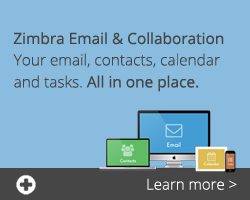
Years pass and things change – web design is no exception.
It is important for web designers to keep up to date on what works and doesn’t work for their websites. Not only to stay with the times but also to do their best work. Creating modern and fresh designs helps a website be successful. Exploring the new trends can allow web designers to expand their creativity and skills by incorporating these new trends into their own work.
Let’s talk about the shift
There has been a noticeable shift in web design trends in recent years. Simple, clean, and minimalistic trends that once dominated the field have been replaced by complex, diverse, and chaotic trends. Everything is now bigger, brighter, and bolder.
In 2017, certain web design trends have been more apparent than others. Below is a list of trends that have gained exceptional popularity so far this year.
Trends of 2017
Layout, Composition, & Structure
First impressions are important and this responsibility lies largely in the layout of the website. Although the basic framework of websites has not changed drastically, there have been some noteworthy changes this year.
Layouts are clean and sleek, with aim to increase focus on content
- Single pages with endless scroll, often alongside a blank or flat background
Open styled composition rather than restricted or limited
- Elements appear to exist beyond the border of the screen
- Asymmetric structure has “broken the rules” of standard organization
- Website elements are diverse and often unbalanced
- Elements are different sizes and shapes
- Elements are not aligned using traditional methods, often overlapping
- Elements are separated by various distances
Navigation & Accessibility
The maximization of website functionality has been a major trend in web design this year. As such, navigation and accessibility has changed to directly improve website functionality.
Highlighted changes include:
- Menus are larger and wider, to minimise clutter and maximise ease of access
- Main menus incorporate and include media, such as photos, to increase appeal and attractiveness
- Side menus are in a fixed pane to provide users access at all times
- Most importantly, websites are being constructed for mobile-first platforms to expand device usage
Media, Texts, & Colors
The appearance and aesthetics of a website are another very important component of a websites impression. This area of web design tends to change significantly over time, as our society fluctuates and adheres to popular culture and trendy themes.
- Headings are shorter, bigger, and bolder to make a statement
- Colors are brighter and louder to grab the attention of viewers
- Gradients or textures are used to increase dimensions of web page
Media is more diverse through interactive media, photos, and videos
- Photos, texts, shapes, and other elements overlap with one another
- Styles of elements contrast, such as using bolder text with delicate/thin shapes
Branding & Collaboration
There are more ways to make a statement besides using website structure and appearance. Viewers are receptive to authenticity, and this can be expressed through branding and collaboration techniques.
Essentially: the more you relate, the more you appeal. Web designers have followed this guideline and, as such, trends have formed.
- Personalised branding increased, with the aim to maximise the relatability of content and build transparent relationships with viewers
- Networking and collaboration developed, with the aim to build relationships with fellow web designers and businesses while expanding and reaching a larger audience
Final thoughts
Web design is forever growing and changing. Trends may come and go, and while these changes can be exhausting they should be seen as exciting opportunities to stay fresh and modern. Every so often, web designers should explore these trends to expand upon their already-established creativity and skills.
Do you have a 2017 trend that you want to share with us? Tweet us @intuitionnet and let us know.
Thanks for reading!
Suggested Links:
Posted on August 10th, 2017

